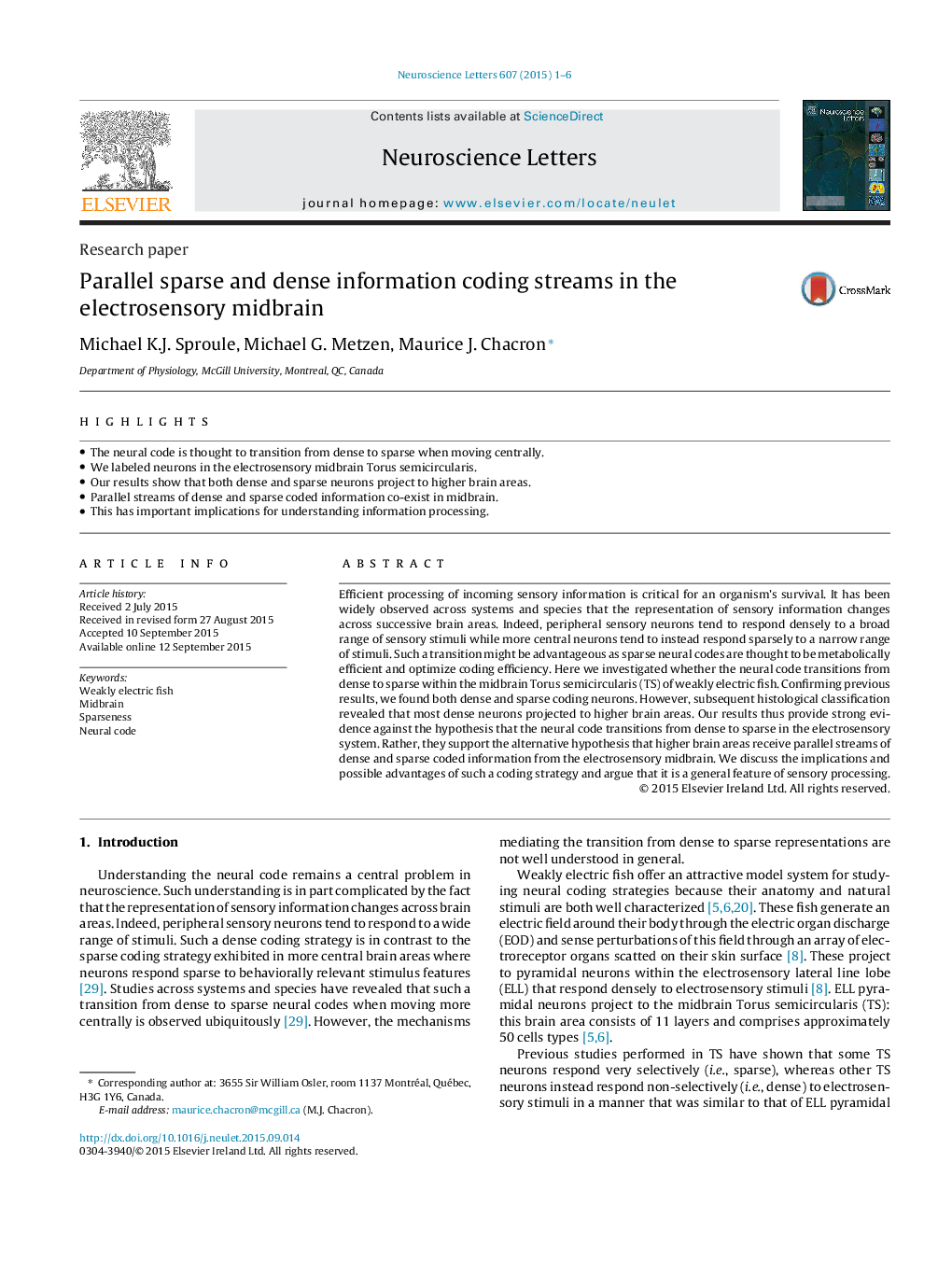| Article ID | Journal | Published Year | Pages | File Type |
|---|---|---|---|---|
| 6280574 | Neuroscience Letters | 2015 | 6 Pages |
â¢The neural code is thought to transition from dense to sparse when moving centrally.â¢We labeled neurons in the electrosensory midbrain Torus semicircularis.â¢Our results show that both dense and sparse neurons project to higher brain areas.â¢Parallel streams of dense and sparse coded information co-exist in midbrain.â¢This has important implications for understanding information processing.
Efficient processing of incoming sensory information is critical for an organism's survival. It has been widely observed across systems and species that the representation of sensory information changes across successive brain areas. Indeed, peripheral sensory neurons tend to respond densely to a broad range of sensory stimuli while more central neurons tend to instead respond sparsely to a narrow range of stimuli. Such a transition might be advantageous as sparse neural codes are thought to be metabolically efficient and optimize coding efficiency. Here we investigated whether the neural code transitions from dense to sparse within the midbrain Torus semicircularis (TS) of weakly electric fish. Confirming previous results, we found both dense and sparse coding neurons. However, subsequent histological classification revealed that most dense neurons projected to higher brain areas. Our results thus provide strong evidence against the hypothesis that the neural code transitions from dense to sparse in the electrosensory system. Rather, they support the alternative hypothesis that higher brain areas receive parallel streams of dense and sparse coded information from the electrosensory midbrain. We discuss the implications and possible advantages of such a coding strategy and argue that it is a general feature of sensory processing.
